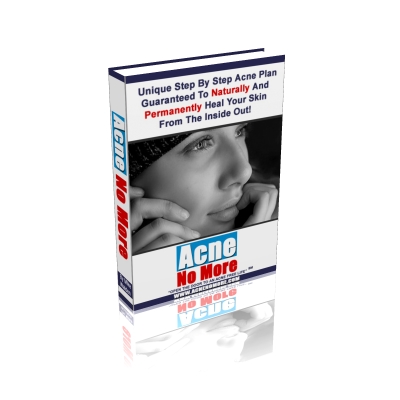The Connection Between Acne and Rosacea with MRSA
The Impact of MRSA on Hospitals and Patient Safety
MRSA (multi-resistant Staphylococcus aureus) poses a significant challenge in hospitals, contributing to numerous deaths and extended hospital stays. This not only affects the availability of hospital beds but also erodes people's trust and confidence in the safety of healthcare facilities.
The Role of Overprescribing Antibiotics in MRSA
Research indicates that the inappropriate overprescription of antibiotics by general practitioners is a major contributing factor to the spread of MRSA. It is widely recognized that the majority of infections are viral in nature and do not necessitate antibiotic treatment.
Visit: Accutane: Transforming Your Skin with Rapid Renewal
Antibiotics, Gut Bacteria, and Long-term Effects
Antibiotics are known to disrupt the balance of gut bacteria, leading to the overgrowth of fungi like Candida in the intestinal tract. While Candida naturally resides in everyone's gut, it is typically kept in check by the surrounding probiotic bacteria, which produce chemicals to maintain balance. However, the use of antibiotics can reduce probiotic bacteria, allowing Candida to proliferate. Over time, this overgrowth can lead to inflammation, potential misdiagnosis of irritable bowel syndrome (IBS) later in life, and perpetuate a cycle of prescribing antibiotics unnecessarily. We must avoid promoting this detrimental spiral. Fortunately, there are effective ways to restore the normal bacterial balance, reduce Candida overgrowth, and promote gut health without relying on harsh antifungal agents.
The Impact of Acne and Rosacea Treatment on MRSA Prevalence
Ironically, the use of antibiotics to treat skin conditions such as acne and rosacea, even at low doses and for extended periods (3 to 6 months), is likely the primary driver behind the emergence of MRSA in hospitals. Allow me to elaborate.
Whether administered orally or topically, antibiotics pose the same problem. In the case of acne, when multiple "pores" (pilo sebaceous ducts) become blocked, the anaerobic bacteria Propionibacterium acnes (P. acnes) can colonize the area beneath the blockage, leading to inflammation and damage. P. acnes only thrives at very low levels on healthy skin, as it prefers an oxygen-deprived environment. Acne, by nature, creates such an environment, providing an ideal breeding ground for P. acnes. While antibiotics can help reduce P. acnes, they also harm other beneficial skin bacteria, leading to an unforeseen predicament.
Staphylococcus epidermidis (S. epidermidis), a bacterium that resides on our skin, acts as a defense mechanism against harmful bacteria. S. epidermidis thrives in an oxygen-rich environment. Unfortunately, the antibiotics that reduce P. acnes also impact S. epidermidis. This assault places selective pressure on the bacteria, forcing them to adapt and survive. Within a few weeks, antibiotic-resistant strains of S. epidermidis can be isolated from the skin being treated with antibiotics.
S. epidermidis is closely related to Staphylococcus aureus (S. aureus), akin to cousins. S. aureus inhabits the body's interior, while S. epidermidis resides on the skin. They converge in places such as the nose and other body entry points. Through the exchange of genetic information via plasmids, it is highly probable that these bacteria transfer resistance mechanisms to each other.
Thus, the development of superbugs commences. When an individual with acne undergoes surgery and subsequently contracts a wound infection, it may be caused by their own bacteria or pre-existing bacteria at the surgical site. S. aureus is a typical wound-infecting bacterium. The antibiotics employed to treat wound infections are often identical or similar to those previously used to address the patient's acne. Consequently, it is unsurprising that the antibiotics fail to work due to preexisting resistance. This resistant strain of bacteria then becomes the dominant resident S. aureus in the hospital, posing significant challenges for eradication and potentially infecting numerous other patients.
A Novel Approach to Acne Treatment: Aknicare
To circumvent the breeding of antibiotic-resistant bacteria, it is essential to consider alternative acne treatments. Aknicare, a medical device with a CE mark, employs four antibacterial agents that effectively control P. acnes by altering the conditions beneath the blockage, rather than directly destroying the bacteria. This unique approach allows for the prevention of damage and inflammation without fostering the development of resistant bugs. Aknicare addresses not only P. acnes but also targets other key factors contributing to acneic skin, including inflammation, excessive oil production, and abnormal cell turnover. By utilizing Aknicare, we can achieve comprehensive acne treatment without exacerbating the issue of antibiotic resistance.
Rethinking Rosacea Treatment: A Focus on Metronidazole
In the treatment of rosacea, a commonly recommended intervention according to PRODIGY, the GP prescribing database, is the usage of ROSEX creams and gels. These products contain the antibiotic metronidazole. Rosacea patients often employ metronidazole for months or even years. However, it is important to note that metronidazole's efficacy in treating rosacea stems primarily from its potent antioxidant properties, rather than its antibiotic effects. Rosacea is not caused by bacteria. It is alarming to consider that metronidazole, the antibiotic most frequently utilized in theatres to prevent infections during and after surgery, may have been used for an extended period prior to the operation.
Taking Action for the Future: Altering Prescribing Habits
It is disconcerting to realize that the antibiotics used today could contribute to fatal outcomes for patients in the near future. To combat this pressing issue and make a meaningful impact on MRSA prevalence in hospitals, we must change the prescribing habits surrounding acne and rosacea. Embracing innovative solutions such as Aknicare, a product with the potential to be prescribed by GPs once included in the drug tariff, can spearhead the shift towards better treatment outcomes. The responsibility lies with Primary Care Trusts (PCTs) to take immediate action and prioritize the adoption of such alternatives.
By reevaluating our approaches to acne and rosacea treatment, we can safeguard patient health, prevent the spread of MRSA, and contribute to a safer hospital environment. Let us unite in this endeavor and reshape the future of dermatological care.
Are you tired of battling acne and rosacea? Discover the ultimate solution to your skin concerns today! Visit AcneNoMore.com to access the best information and techniques for eliminating acne. Say goodbye to frustrating breakouts and hello to clear, radiant skin. Don't let the acne (and rosacea) link to MRSA hold you back. Take action now and unlock the secrets to a blemish-free complexion. Click here to visit AcneNoMore.com and reclaim your confidence. Your journey to flawless skin starts here!


%20Link%20to%20MRSA.JPG)














0 Comments